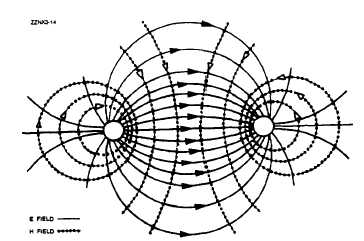Re: why transmission line can not receive EM wave?
Imagine that the termination is formed by a resistive sheet, in order to not perturbe the wave propagating along the line. (For this reason it cannot be a lumped resistor.)
---------- I do not understand what you mean. You know we always terminate the transmision line using the lumped resistor. Right?
Thank you for your reply.
let us discuss further.
That works right for a transmission line whise dimensions (trasversal to the direction of propagation) are much shorter than the wavelength.
Our case is different. The width of the plates is ideally infinite, or at least many, many wavelengths wide. When propagating TEM mode, the current is uniform at any line of the plate parallel to H field. If that line would be terminated with a lumped resistor, the current can not be longer uniform near that resistor: it would be concentrated at the point of the connection. The mode can not be TEM in the proximities of the termination. As consequence, we would have other evanesent modes, reflection, etc.
Instead of that, a uniform lossy sheet does not perturb the uniformity of the propagting TEM wave.
Regards
Z
Your reply is really helpfull for me and other guys.
thanks a lot.
How about The width of the plates is narrow?
Why we always compare with wavelength?
Then, he configuration of the fields changes and it no longer has lines of E field normal to the plates and H lines parallel to them.
In the limit, as width<<separation, they resembles the fields in a bifilar balanced line (picture from another view):

Dimensions are scaled with wavelength.
Supose that some original structure (waveguide, antenna, etc) has some behaviour, characeristic or field configuration at wavelength Let"s 0.
Let's scale the structure by a factor k (i.e., multiply all sizes k times). Then the resultant structure has the same properties (impedances, radiation diagrams, etc.) at the wavelength k* λ0.
Regards
Z
Then, my question is can this bifilar balanced line receive plane wave?
why?
Thanks again.
